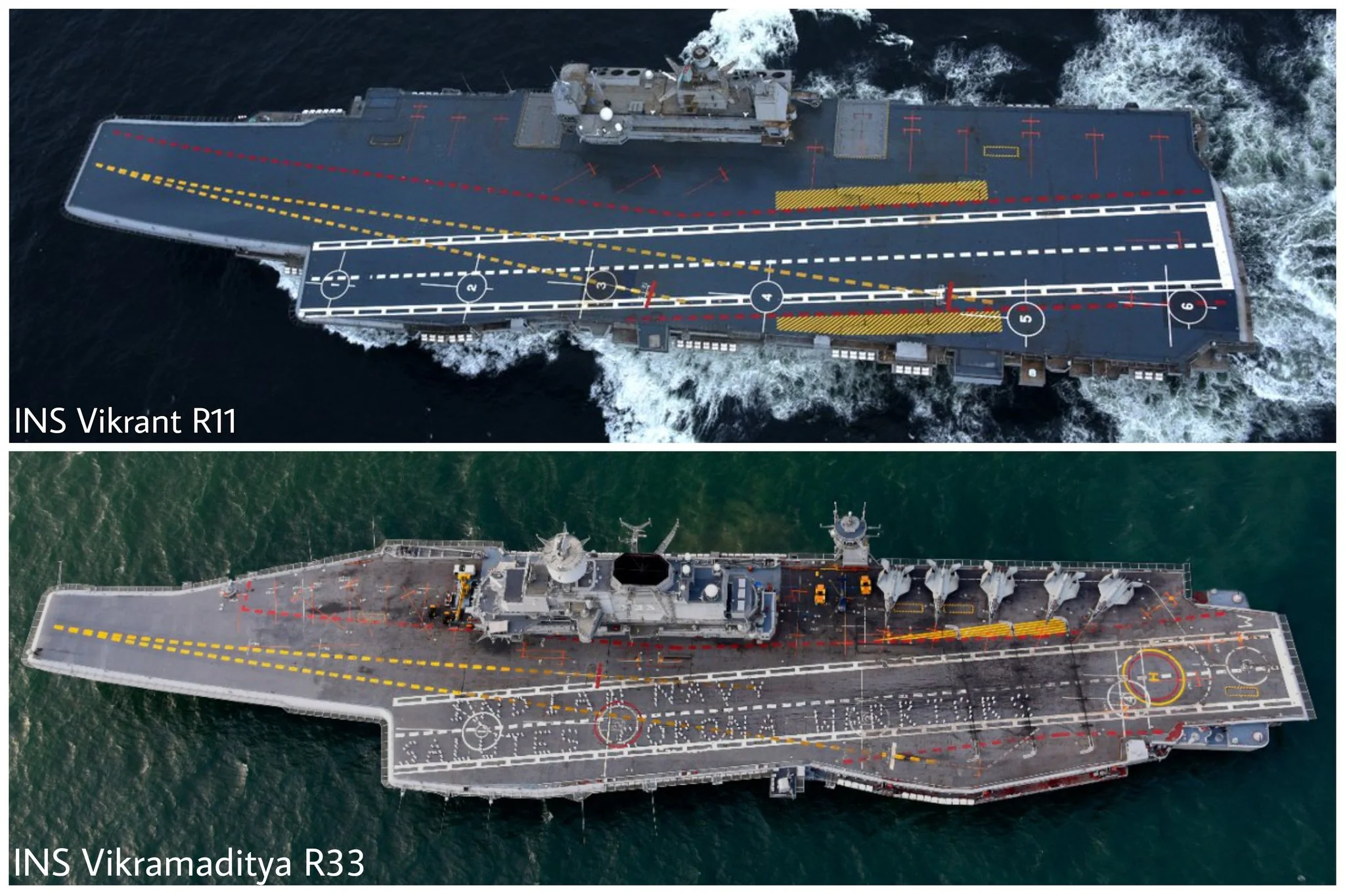INS Vikrant and INS Vikramaditya
The modernization of the Indian Navy has reached several important milestones. The best examples of this are its two aircraft carriers, INS Vikrant and INS Vikramaditya. Although both are the backbone of India’s naval power, there are certain basic differences with regard to the origin, building, technological inputs, and strategic importance of these two vessels.
Mentioned below are the primary distinctions of these two warships
Origin and Construction
INS Vikrant (IAC-1) is India’s first aircraft carrier that was constructed domestically. It is the pride of her ‘Make In India’ tagline as it was built in accordance with the design provided by the Indian Navy at the Kochi Shipyard and got commissioned on 2nd September, 2022.
INS Vikramaditya, on the other hand, is a converted soviet aircraft carrier formerly known as Admiral Gorshkov. It was originally constructed in the soviet union but was later purchased by India with significant modernization done in russia, commissioning on 16th November 2013.
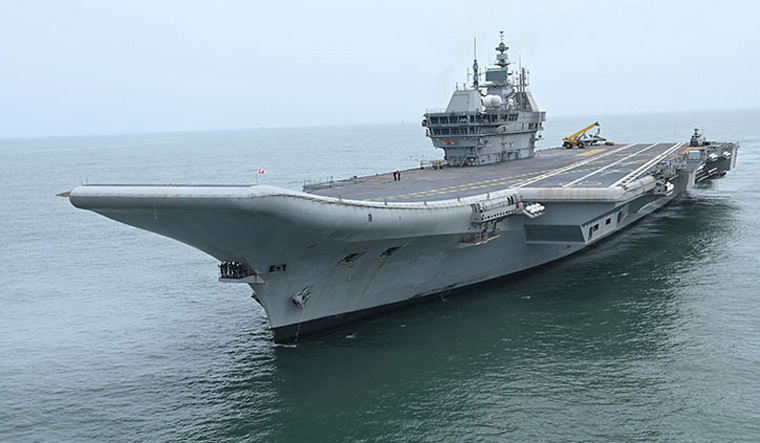
Ins Vikrant
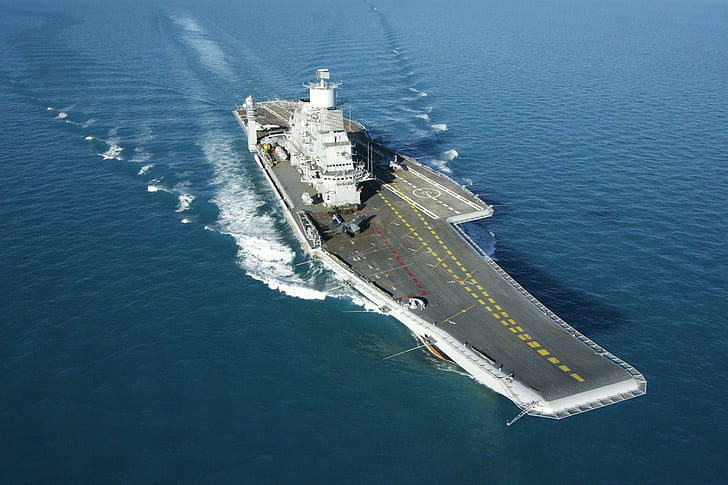
Exploring Technology
The ship INS Vikrant is completely new and of Indian origin. It was designed by the Indian Navy’s Design Department, and 75 percent of its parts are from local suppliers. They include: steel, combat management systems, electrical equipment, and other modern sensors.
INS Vikramaditya is an old Soviet warship that served as a hybrid cruiser-carrier. It underwent reconstruction at the Sevmash shipyard in Russia, which gave it a full-fledged aircraft carrier form.
Dimensions and Mass
INS Vikrant
Length: Approximately 262 meters
Displacement: Roughly 45,000 tons
Maximum speed: 28 knots
Range: 7,500 nautical miles
INS Vikramaditya
Length: approximately 283 meters
Displacement: approximately 44,500 tons
Maximum speed: 30 knots
Range: 7,000 nautical miles
Vikrant boasts of a more advanced design and modern features compared to Vikramaditya, which has a slight advantage in terms of dimensions.
Aircraft carrying capacity
Both ships escorting the Admiral utilize STOBAR (Short Take-Off But Arrested Recovery) technology. In this system, an aircraft’s take-off is done via a ski-jump while landing is done via arrester wires.
INS Vikrant is capable of carrying around 30 aircraft, including MiG-29K fighter jets, Kamov-31 helicopters, and the MH-60R Seahawk. In the future, it may include indigenous TEDBF fighter jets.
Currently, INS Vikramaditya operates MiG-29K and Kamov-28/31 along with HAL Dhruv helicopters.
Self-reliance defense strategy and indigenous dependency
Being a warship, INS Vikrant is indigenously-centric as most of its components, engineering systems, and electronics are produced in India. This showcases India’s self-reliant defensive industry policy.
Meanwhile, INS Vikramaditya continues to rely on various Russian technologies and components for its engines, radar, and other critical systems.
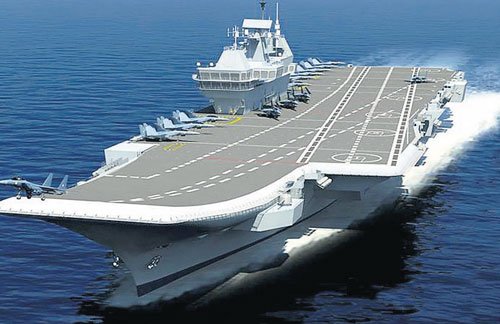
Ins Vikrant
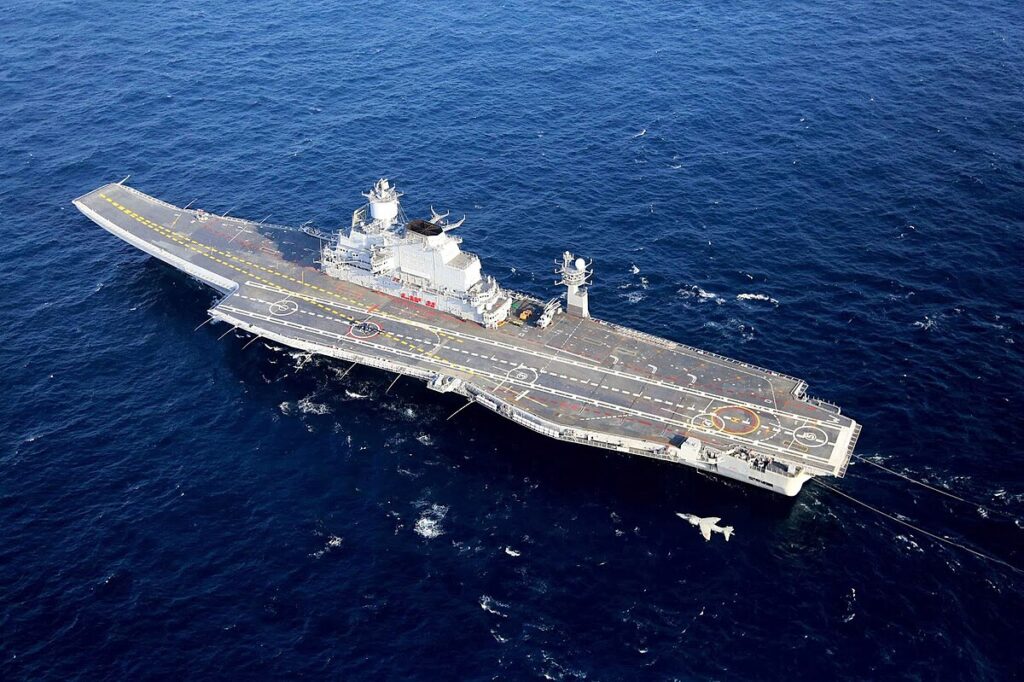
Ins Vikramaditya
Strategic role
Both warships have a major role in keeping India’s naval presence and security in the Indian Ocean.
INS Vikrant is a futuristic, digital warship that can be integrated with drones, satellites, and network-centric warfare.
INS Vikramaditya has been the Indian Navy’s flagship for the last ten years since India’s only operational carrier has been in active service.
Conclusion
INS Vikrant and INS Vikramaditya — both are crucial for India, but they differ fundamentally in design, technology, reliability and strategic role. Vikrant is the icon of the future — an icon of indigenous technology, contemporary design, and self-dependence. And Vikramaditya is the battle-tested warship that is the cornerstone of India’s naval might.
Together, these two warships have augmented the capabilities of the Indian Navy many fold and converted India into a major maritime power.

